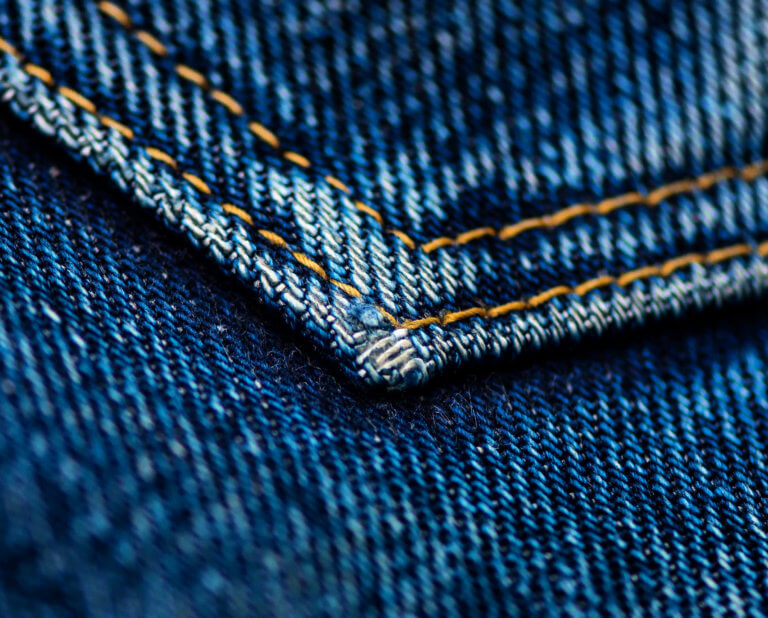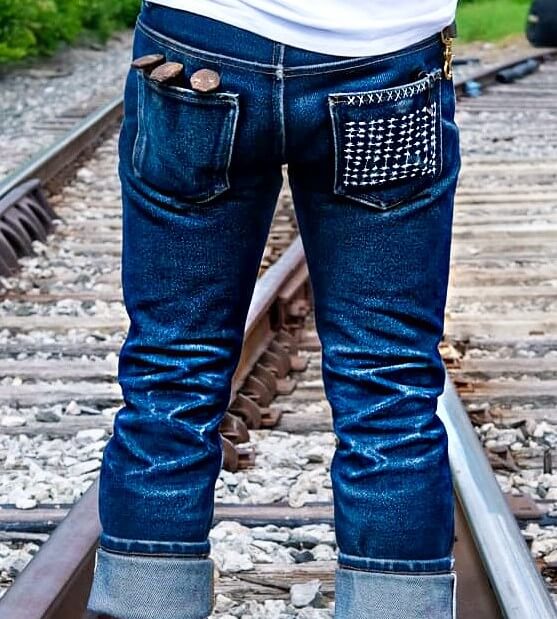Why Selvedge Denim Costs More, and Why it’s Worth Every Penny
There’s no getting around it: raw denim and selvedge brands are more expensive than their fast-fashion counterparts. If you’re used to spending about as much on a pair of jeans as you spend on a night at the movies (perhaps less), you might experience some sticker shock the first time you turn over the price tag on a pair of well-made selvedge jeans.

“Why does raw denim cost more?” is the first question a lot of people new to selvedge ask, so we’ve provided this article as a resource. The points below will help you understand why raw denim costs more, and what kind of returns you can expect on this investment—spoiler alert: big ones. Let’s dive in with a look at the primary reasons that raw denim and selvedge denim cost more.
Why Selvedge Denim Costs More
Selvedge Looms Slow Down Production
We won’t get too far into the weeds here, but selvedge denim is produced on narrow shuttle looms that simply can’t match the output of the newer projectile looms. The higher output of projectile looms comes with a cost: mass-produced non-selvedge denim is blander and less durable.

In the seventies and eighties, these differences didn’t mean much to consumers, but a small handful of passionate makers kept the old ways of doing things on life support. When the market turned in the nineties and denim lovers began to demand better (rather than cheaper) denim, the remaining selvedge looms and the handful of artisans who knew how to operate them were ready to spring back into action. There aren’t many of these machines left, and this means that selvedge denim is in short supply.
It needs skilled hands
Selvedge looms need constant maintenance and skilful operators. This kind of skilled labour doesn’t come cheap. The tailors who assemble the jeans must also be highly skilled, and they too need heavy-duty sewing machines that can handle the heavy denim. These machines are often just as old as the selvedge looms, and they too need to be maintained by skilled hands.
The combination of costly labour and machinery means that a metre of selvedge denim might cost as much as or more than the retail price of a pair of non-selvedge jeans from a fast-fashion outlet. When you add the skilled tailors into the mix, you can expect to pay at least four or five times the price for a pair of well-made selvedge jeans as you might pay for an inexpensive mass-market pair.
It’s Crafted Ethically and Sustainably
The fierce competition in the seventies, eighties, and nineties for the denim consumer’s dollar led denim brands big and small to seek ways to cut corners and shave costs. This meant that the denim industry had more than just indigo on their hands. They exploited labour and production markets in the developing world, polluting and utilizing sweat-shop labour to keep costs low and profits high.
Since the turn of the century, though, consumers have been raising their voices and asking brands to align their practices with stricter ethical and environmental codes. Selvedge brands have been quick to respond to these calls for increased corporate responsibility.
They reward skilled artisans handsomely for their work, and they scrutinize every facet of production (from the cotton farmers all the way to the shippers), looking for ways to minimize their environmental footprint. This leads to higher costs for the consumer, but it also means that both brands and their customers can sleep soundly at night.
Why Selvedge Denim is Worth Every Penny
The Denim has Character
When you compare selvedge denim to the mass-market stuff up close, it immediately becomes clear that there’s no comparison. Pick it up and rub it between your fingers and the difference become even more obvious. The mass-market denim has no texture. There’s that familiar feel and look of denim, but it’s one-dimensional. There’s no character.

Long before they have experienced the full raw denim journey (more on this below), denimheads fall head over cuffs for the look and feel of selvedge denim. The fabric is a showcase of the dyer’s and the weaver’s arts. There are subtle variations in colour (the result of the limited permeation of the dye into the cotton yarns), and you can both see and feel where these fibres interlock (a result of the looser and more irregular weave).
You can see some of this character in our fabric samples here, but selvedge denim needs to be seen up close for its depth of character to be fully appreciated.
Selvedge Is Made to Fade
Mass-market denim is made with a very short lifecycle in mind.
When it gets dingy or faded, the consumer is expected to discard it and purchase a new pair.
Selvedge brands expect the consumer to bond with their jeans—and this process of bonding leaves a mark on the denim. Selvedge is made to fade, made to bear on its surface a map of your journey together.

Selvedge jeans are extremely rigid at first. Each time you move or bend your legs, this forms creases in the top block (whiskers), across the back of the knees (honeycombs), and where the denim stacks up around the ankle (stacks). The dye begins to chip away, exposing the white core of the yarn. These whiskers, honeycombs, and stacks are entirely your own. Every pair faded by its owner is entirely unique and, for this reason, immeasurably valuable. Perfectly faded pairs are, for denimheads the world over, prized possessions.
Selvedge Denim Will Push All Your Other Pairs to the Back of the Closet
Many of those who are sliding on a pair of raw denim for the first time scrunch up their face and say that their mass-market jeans are more comfortable. They can admit that they look great, but they don’t feel the way they expect denim to feel. With a little bit of encouragement, they take the plunge. We start the countdown.
Before a month has passed, they come back, and their tune has changed. The heavy denim has started to relax, leading to a much more comfortable fit. Fades have started to emerge around the knees and in the top block, and you can see the faint outline of a wallet in their back pocket and maybe a phone in their front pocket. They can see where the pair is heading, and they’re hooked on the process.

The investment in selvedge denim may not be a small one, but make that investment and the full raw denim experience will make you glad you did. The bond between you and your pair will grow stronger each time you slide them on, and you’ll soon be fully converted. The rest of your pairs will get pushed to the back of the closet, where they’ll gather dust until you either discard or recycle them.
There’s no stronger case than this. Those who do spend a little extra to get selvedge denim see this investment repaid ten-fold, and it quickly becomes the only thing they want to wear. They get value in the experience of wearing something that gets a little better every time they wear it, and they get value in the results they see when they dedicate themselves to a single pair. They don’t see the cost as a sacrifice. Quite the contrary, they often wonder why it doesn’t cost more.
SOSO Family Newsletter
Be No.1 and receive the latest denim news, fabric releases and promotions!







